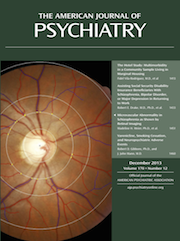The latest in a series of books called “Art &” (the series includes Art & Science, Art & Sex, Art & War) comes Art & Psychoanalysis, by Dr. Maria Walsh, a senior lecturer in fine art theory at the University of the Arts in London, where using psychoanalysis to interpret artwork is more popular than it is in America. Citing the usual suspects—Baudrillard, Derrida, Fer, Foster, Lacan, Mulvey, and Krauss—Walsh takes us on a visual tour of the 20th century through a psychoanalytic lens.
One not versed in the application of psychoanalysis to modern and postmodern art might think first and only of the Surrealists, who actively utilized Freud’s theories of the unconscious to create and discuss their art. However, psychoanalytic theory has been a go-to for art historians, philosophers, and critics looking at work that was made both before and after the Surrealists. Freud himself wrote an entire essay about Da Vinci’s paintings, and psychoanalytic theory has been used to help understand the work of modern and postmodern artists, from Jackson Pollock in the 1940s to Andy Warhol in the 1960s to Jeff Koons in the 1980s and Tony Oursler in the aughts.
Indeed, the application of psychoanalysis to art is vast, and Dr. Walsh had to carefully curate a small selection of applications in order to fit the slim, almost pocket-size format of the “Art &” series. She chose to focus on post-Freud art, beginning with the Surrealists and their use of dream-work, and then skipping ahead mostly to the conceptual artists of the 1970s to 1990s to illustrate how abject art, appropriation art, and identity art (primarily black, gay, or female identity) can be viewed through the psychoanalytic lenses of fetishism, narcissism, and the death drive. She draws a helpful distinction between the psychoanalytic object and the objet d’art but then shows how these two are conceptually intertwined, and, when combined with the notion of objectification, can go a long way in explaining much of the Western canon from 1960 to 2000.
One example of how Dr. Walsh uses psychoanalysis to derive meaning from otherwise abstruse art objects is her discussion of the role of fluids in the work of Kiki Smith. Smith, whose paper and wax sculptures of women often have a long trail from the genital region of the sculpted figure that extends along the gallery floor, uses the symbolic significance of fluids to convey meaning to the viewer. According to Dr. Walsh, fluids “entrain psychic fantasies and desires around issues of sexual difference and the relation of self and other” (p. 74). Whether the viscous trail represents blood, urine, feces, or umbilical material, it delineates the separation between self and other, and in the case of umbilical or menstrual fluid, the separation between the infant and the mother.
Dr. Walsh, though clearly a proponent of using this theoretical framework, does not, for the most part, address works past the 1990s. Her methods of studying abjection and objectification could be successfully applied to the work of Damien Hirst, John Currin, and Ed Ruscha, among many other contemporary artists, and the book would be strengthened by the inclusion of truly contemporary artists, who could illustrate the relevance of psychoanalysis to art theory today. Another criticism of the book is that it over-represents female artists—with its focus on Eva Hesse, Louise Bourgeois, Cindy Sherman, Mary Kelly, Rachel Whiteread, Marina Abromavic, and Kiki Smith, it reads as a guide to the major female artists of the 20th century, at the expense of key male artists.
Unfortunately, the book is riddled with copy editing errors that detract from the intellectual rigor of the writing.
Dr. Walsh apologizes (though insists that she does not feel “guilty”) in her introduction to readers, noting that psychoanalysts may criticize her book for not delving deeply enough into theory, while artists may say the book lacks focus on artworks themselves. As a former art historian who is now a psychiatrist, I had neither criticism and would recommend this book to anyone interested in understanding the sometimes baffling conceptual art of the latter half of the 20th century. Recreational viewers often complain that modern and contemporary art is not visually pleasing or demonstrative of technical talent. They are correct: conceptual art—the art that is discussed in this book—requires rigorous thought and interpretation to be appreciated. Art & Psychoanalysis demonstrates a successful way (or ways) in which this can be done.

